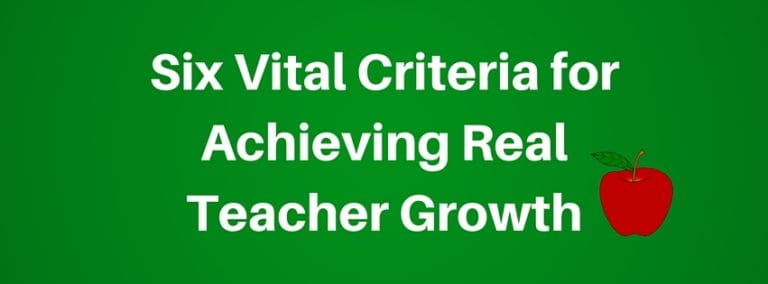First, professional growth is a highly individualized process. While the ideas for individualized growth can be stimulated by group inservice-day sessions, real growth will come not at the session itself, but afterward—with time for individual reflection, examination, experimentation, and practice. Often a teacher will have to read, study, and think about a concept many times before it will “click.” Only then will he or she have the desire and the confidence to give it a try. And, at all times, teachers need ready access to the knowledge that gave them the ideas as a touchstone for their further thought, implementation, practice, and self-evaluation.
Second, professional growth is highly probable only when staff development efforts cover the wide range of teacher needs and concerns. This is a reality because a teacher needs competencies on a wide front to grow professionally. A weakness in one competency can prevent movement to a higher level of performance. Thus, without a solid foundation in many areas, moving to higher levels of functioning may not be possible.
For instance, a teacher may want to try a new concept that he or she heard about during an inservice-day session. However, this same teacher may lack the skills to implement new suggestions. Therefore, unless the teacher is given comprehensive help in such areas as teaching techniques, communication skills, discipline, motivation, student relationships, grading, testing, parent relationships, and colleague relationships, a new concept—even though it’s a good one—doesn’t have a prayer.
As principals and superintendents, we can never forget how complex teaching, learning, and working in the classroom are—and how many different competencies teachers need to master in order to succeed. To have twenty-five students or more in a room hour after hour and day after day with the responsibility of providing individualized instruction and care is not an easy undertaking. That’s why teachers must be given a wide range of academic and human methods, techniques, and skills to be highly successful. When teachers are successful with all students they will do anything for them. That’s a reality.
Third, for professional growth to occur—year after year—administrative help must be continuous. It must be ongoing—every week and every year. After all, the work of the classroom teacher is continuous. The pressures are continuous. The challenges are continuous. The demands are continuous. And the expectations for outcomes and results are continuous.
Fourth, for professional growth to keep on occurring, a professional growth program must support existing excellence. To be motivating as well as effective, a good program of teacher growth must focus on what teachers are doing right as well as what needs improvement. Teachers who are thinking right and doing things right need to be confirmed—as well as to receive the knowledge and skills which can make them even better.
Too often, administrative time and effort are devoted primarily to teachers who are experiencing problems. As a result, the “squeaky wheel” gets the grease—and those teachers who demonstrate master teacher performance day after day feel ignored. They feel that what they do isn’t noticed—and that they don’t get any help. Yet, these teachers are the standard bearers for professional growth. To keep motivation high, we must support and recognize these teachers and their practices via a program of professional growth.
Professional growth is a necessity no matter how busy teachers, principals, or superintendents are.
Fifth, to be effective, a program of teacher growth must be easy to deliver. As we all know, schools are busy places. Giving teachers help on a regular basis is not an easy accomplishment. This is one reason the predominant system of delivering staff development in schools continues to be one-shot presentations by the “hot” expert of the year. Yet, this delivery system finds administrators captured by the if only syndrome. If only teachers listened, learned, and applied this information, they would get better, all problems would be resolved, and life would be good. Simultaneously, teachers are left feeling that training is just something else “they” are trying to do to teachers again. All of this results in very little growth for teachers—or the organization as a whole.
Sixth, for a program of professional growth to be sustained, it must be economical. No matter how great the want or need, ongoing training will not happen if the cost is more than principals and superintendents can afford. And many schools are operating on a shrinking pool of funds. In truth, an individual and continuous program of staff development must be economical or it won’t be employed.



